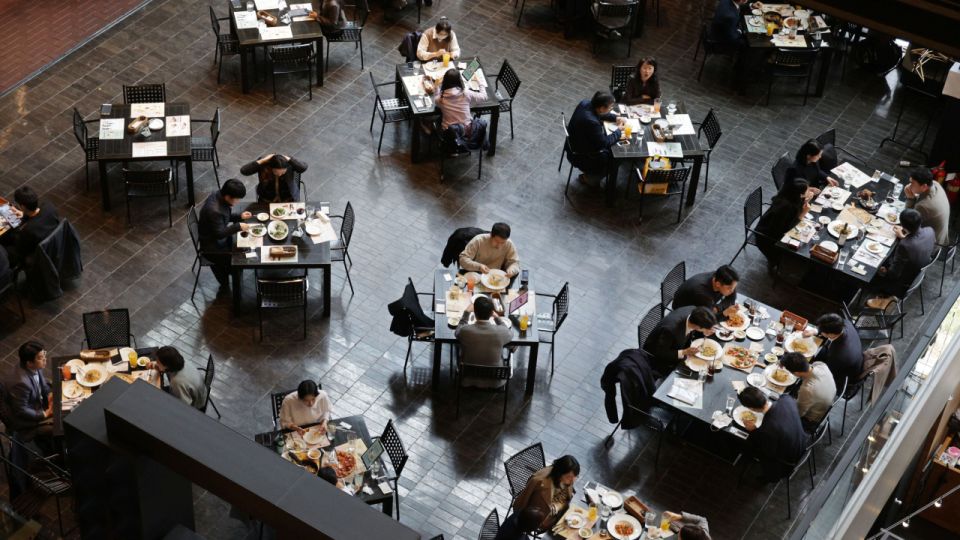April 4, 2022
SEOUL – Social distancing may come to a complete end in South Korea in two weeks’ time, according to top officials, over prospects that the ongoing omicron wave is leveling off and receding.
Prime Minister Kim Boo-kyum said during a government COVID-19 meeting Friday that there would be “a bold shake-up of the remaining social distancing practices” that are due to expire on April 17.
In a news briefing held the same day Minister of Health and Welfare Kwon Deok-cheol said the country’s social distancing policy would undergo a “total readjustment, if metrics continue to improve for the following two weeks.”
“With the exception of an indoor mask mandate, all pandemic restrictions including nightly curfews and the limits on gatherings will be lifted, and we’ll move toward a system that is closer to normal life,” he said.
Korea’s last attempt at opening up and resuming normal life on Nov. 1 last year had to be rolled back in less than a month amid a severe hospital bed shortage.
Health officials have discredited social distancing as an inefficient approach to tackling the omicron variant, which is highly transmissible and yet much less virulent than its predecessor delta.
Health Ministry spokesperson Son Young-rae told a March 29 briefing that “considering the low fatality rates of omicron, imposing tough pandemic control measures is not deemed to be necessary.”
“Rather, their socioeconomic costs would be a bigger problem,” he said.
Korea has eased pandemic-related measures with every announcement made since omicron replaced delta as the dominant virus here in late January.
Free tests for all ended on Jan. 26, and contact tracing on Feb. 7. The self-isolation period was cut to seven days on Feb. 9 regardless of vaccination status. Quarantine requirements for close contacts of infected people were scrapped altogether on Feb. 25. From April 1, fully vaccinated travelers arriving from overseas no longer need to quarantine.
The omicron wave, which is still in progress, has exacted an enormous toll on Korea.
The country counted an average of 321,325 cases a day over March, amounting to a monthly total of nearly 10 million cases. The highest tally for a single day was 621,185 cases on March 17.
As of 5 p.m. Saturday, 64 percent of critical care beds for COVID-19 patients were occupied across the country. Beds for less severely ill patients were up to 41 percent filled.
The 10,647 deaths logged between Jan. 26 — when the government’s omicron plan launched — and April 2 make up 62 percent of 16,929 total known deaths since the beginning of the pandemic.
According to the Health Ministry, 95 percent of omicron deaths are occurring in people in their 60s and older. As third-dose vaccinations for people aged 75 and up began in October last year, their immunity has likely waned. Protection from the booster dose begins to wane after four months since its receipt, according to a US Centers for Disease Control and Prevention’s Feb. 11 study. In Korea, 89 percent of people 60 and above are boosted.
While the ministry said a targeted protection of high-risk groups would be taken, remote monitoring of home-recovering patients in their 60s and older ended on March 25.
Paxlovid, Pfizer’s oral antiviral treatment, has been slow to roll out in the absence of alternatives until Merck’s Lagevrio was cleared for emergency use on March 23. Only around 156,000 patients have been prescribed Paxlovid so far since the first shipments got here on Jan. 13, with 96,000 courses left in the country.
The dominance of omicron’s subvariant BA.2, which is even more transmissible than the original BA.1, is feared to protract the wave. The latest available weekly analysis released March 28 showed BA.2 showed up in 56 percent of new cases registered the preceding week.
No cases of the XE recombinant variant of BA.1 and BA.2, nor “deltacron,” which combines features of delta and omicron, have been discovered in Korea to date, according to the Korea Disease Control and Prevention Agency on Sunday.
Over the 24 hours of Saturday Korea conducted 352,261 PCR tests and found 264,171 cases to be positive, some of which include results from rapid antigen tests. In the last week of March an average of around 482,000 PCR tests were carried out per day, far below the government-touted daily capacity of over 850,000.
As positive results from rapid antigen tests were treated as confirmed cases starting March 14, statistics on positivity rates have paused. Previously only PCR tests were used to confirm a diagnosis. The last available statistics from the week ending March 13 shows around 36 percent of tests returning positive.


